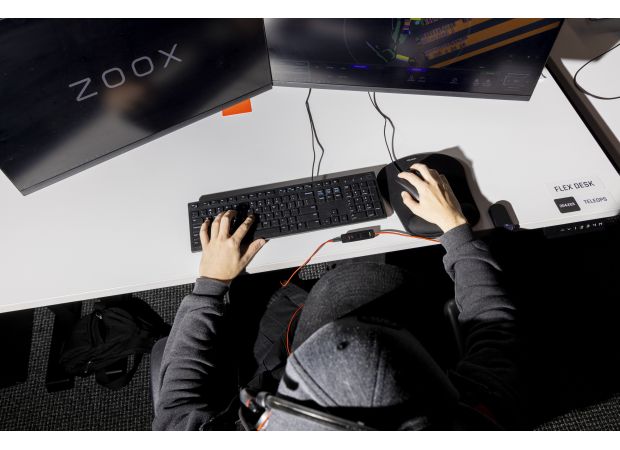Undiscovered individuals assist autonomous vehicles in maneuvering through urban roads.
Self-driving cars use cameras and sensors to recognize pedestrians and other human elements on city streets, increasing safety and efficiency.

In cities like San Francisco, Phoenix, and Las Vegas, you may have noticed self-driving taxis roaming the streets without a human driver at the wheel. These cars, equipped with advanced technology, can even navigate without a steering wheel. However, what many people don't realize is that these "autonomous" vehicles are not completely independent, as they still require human assistance at times.
One of the companies utilizing this technology is Zoox, a self-driving car company owned by Amazon. They have a command center located in Foster City, California, where human technicians can remotely guide their cars when needed. This remote assistance is crucial for the cars to operate effectively, but it is often overlooked by those outside of the company.
In the past, companies were hesitant to reveal the level of human involvement in their self-driving cars. They wanted to create the illusion of complete autonomy to attract investors and showcase their advanced technology. However, as the industry has grown and faced scrutiny, companies like Zoox have become more transparent about their reliance on human technicians.
At Zoox's command center, technicians monitor the self-driving cars and can intervene if necessary. For example, if a car encounters a construction zone it hasn't seen before, a technician will receive an alert on their computer screen. They can then use their mouse to draw a new route for the car to follow, bypassing the construction zone. This guidance is a crucial aspect of the car's operation and highlights the partnership between humans and technology.
During a recent evening in San Francisco, a Zoox car approached an emergency scene and was unable to navigate around a fire truck in its path. The car alerted a technician 35 miles away, who could see video feeds from the car's cameras. The technician was able to adjust the car's path using a computer mouse, directing it to follow a new route. This allowed the car to avoid the fire truck and return to autonomous driving.
As more companies, such as Waymo and Cruise, remove drivers from their cars, there has been increased scrutiny of their operations. This has led to a greater acknowledgment of the need for human assistance in self-driving cars. While the ultimate goal may be fully autonomous vehicles, for now, the partnership between humans and technology is crucial for their success.
In cities like San Francisco, Phoenix, and Las Vegas, it's not uncommon to see robot taxis cruising the streets without a human driver. In fact, some of these taxis don't even have steering wheels. But what many people don't realize is that these self-driving vehicles are not completely autonomous. In fact, they often rely on human technicians who are stationed hundreds of miles away to guide them when they encounter challenging situations.
One such company that utilizes remote assistance is Zoox, a self-driving car company owned by Amazon. Like other autonomous vehicles, Zoox's cars sometimes struggle to navigate on their own, so they have human technicians at a command center in Foster City, California to provide guidance. This type of human assistance is not widely known outside of these companies, as they have previously avoided mentioning it in order to garner attention and investments from venture capitalists.
Gary Marcus, an entrepreneur and professor of psychology and neural science at New York University, compares this situation to the Wizard of Oz - where the illusion of complete autonomy is created to build hype around the technology. But the reality is that these cars still require human intervention in certain situations. For example, if a Zoox car encounters a new construction zone, a technician at the command center will receive an alert and can send a new route for the car to follow using their computer.
Marc Jennings, a 35-year-old remote technician at Zoox, explains that they are not in full control of the vehicle but rather providing guidance. This was evident when a Zoox car encountered an emergency scene in San Francisco and was unable to navigate around a fire truck. The car alerted a remote technician stationed 35 miles away, who was able to see video feeds from multiple cameras installed on the car.
From a dashboard on their computer screen, the technician had a bird's-eye view of the car's surroundings and was alerted that the car was stalled and needed human intervention. Using their computer mouse, the technician set a new path for the car to follow and continued to lay breadcrumbs for it to follow. However, when the car encountered an ambulance obscured by the fire truck, the technician had to quickly adjust the path on the fly. Eventually, the car returned to its lane and continued on autonomous driving.
As companies like Waymo and Cruise have started to remove drivers from their cars, they have faced increased scrutiny. After several high-profile incidents, they have started to acknowledge the need for human assistance in certain situations. This highlights the fact that while self-driving technology is constantly advancing, it still has limitations and requires human oversight to ensure safe and efficient operation.
13 Views






